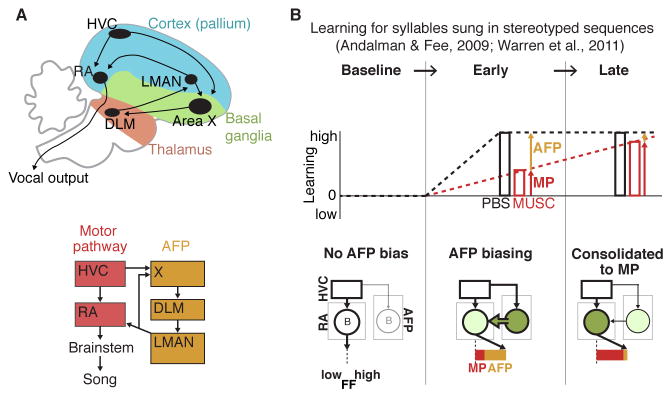Figure 3. Neural circuits that contribute to song production and learning.
(A) Top: song system nuclei schematized according to anatomical organization. Blue, green and red subdivisions refer to “cortical” (pallial), basal ganglia, and thalamic subdivisions, respectively. Bottom: the motor pathway (red) consists of the cortical nuclei HVC (used as a proper name) and RA (robust nucleus of the arcopallium). The anterior forebrain pathway (AFP, tan) consists of the striatopallidal nucleus Area X (used as a proper name), the thalamic nucleus DLM (medial dorsolateral nucleus of thalamus), and the frontal cortical nucleus LMAN (lateral magnocellular nucleus of the anterior nidopallium).
(B) Schematic based on previous work of the contributions of the AFP and motor pathway (MP) to the expression of WN driven learning for a syllable sung in stereotyped sequences (i.e., only ever sung in one context) (Andalman and Fee, 2009; Warren et al., 2011). FF is driven from baseline and then maintained at a fixed value, while LMAN is periodically inactivated by muscimol infusion. The amount of total learning (black lines and bars, “PBS”) that persists during LMAN inactivation (red lines and bars, ”MUSC”) is construed as the motor pathway (MP) contribution to the expression of learning (red arrow), while the difference between total learning and the MP contribution is construed as the AFP contribution to the expression of learning (gold arrow). During “baseline”, LMAN inactivation has no consistent effect on FF, indicating that well-learned song structure is largely encoded in the downstream motor pathway. During “early” learning, LMAN inactivation results in a reversion of learning back towards baseline, indicating that the expression of recent learning depends on biasing signals from the AFP acting on the downstream motor pathway (“AFP biasing”; thick green arrow from AFP to RA). During a “late” period of maintained learning, LMAN inactivation no longer causes a reversion of learning, indicating that learning has been transferred to the motor pathway (“Consolidated to MP”, filled green circle in RA).

